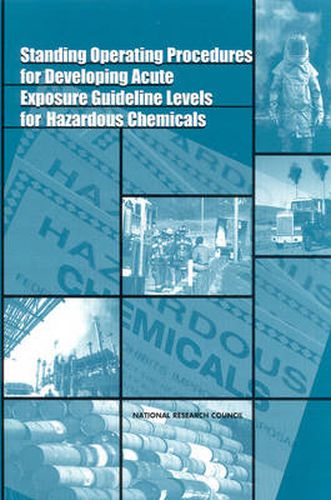Readings Newsletter
Become a Readings Member to make your shopping experience even easier.
Sign in or sign up for free!
You’re not far away from qualifying for FREE standard shipping within Australia
You’ve qualified for FREE standard shipping within Australia
The cart is loading…






Standing Operating Procedures for Developing Acute Exposure Guideline Levels for Hazardous Chemicals contains a detailed and comprehensive methodology for developing acute exposure guideline levels (AEGLs) for toxic substances from inhalation exposures.
The book provides guidance on what documents and databases to use, toxicity endpoints that need to be evaluated, dosimetry corrections from animal to human exposures, selection of appropriate uncertainty factors to address the variability between animals and humans and within the human population, selection of modifying factors to address data deficiencies, time scaling, and quantitative cancer risk assessment.
It also contains an example of a summary of a technical support document and an example of AEGL derivation. This book will be useful to persons in the derivation of levels from other exposure routes?both oral and dermal?as well as risk assessors in the government, academe, and private industry.
$9.00 standard shipping within Australia
FREE standard shipping within Australia for orders over $100.00
Express & International shipping calculated at checkout
Stock availability can be subject to change without notice. We recommend calling the shop or contacting our online team to check availability of low stock items. Please see our Shopping Online page for more details.
Standing Operating Procedures for Developing Acute Exposure Guideline Levels for Hazardous Chemicals contains a detailed and comprehensive methodology for developing acute exposure guideline levels (AEGLs) for toxic substances from inhalation exposures.
The book provides guidance on what documents and databases to use, toxicity endpoints that need to be evaluated, dosimetry corrections from animal to human exposures, selection of appropriate uncertainty factors to address the variability between animals and humans and within the human population, selection of modifying factors to address data deficiencies, time scaling, and quantitative cancer risk assessment.
It also contains an example of a summary of a technical support document and an example of AEGL derivation. This book will be useful to persons in the derivation of levels from other exposure routes?both oral and dermal?as well as risk assessors in the government, academe, and private industry.